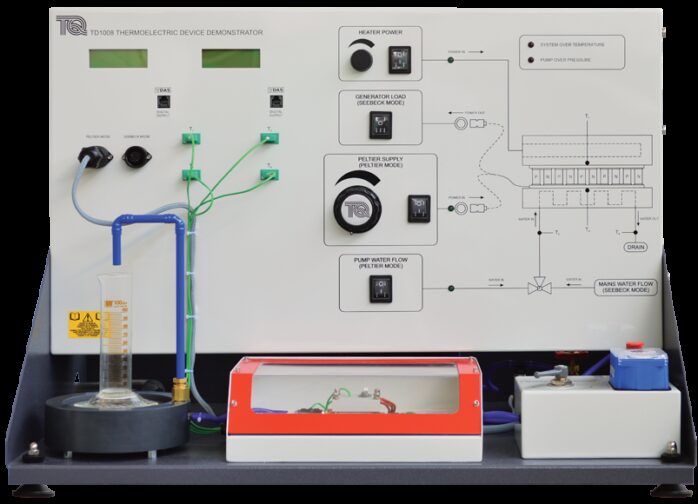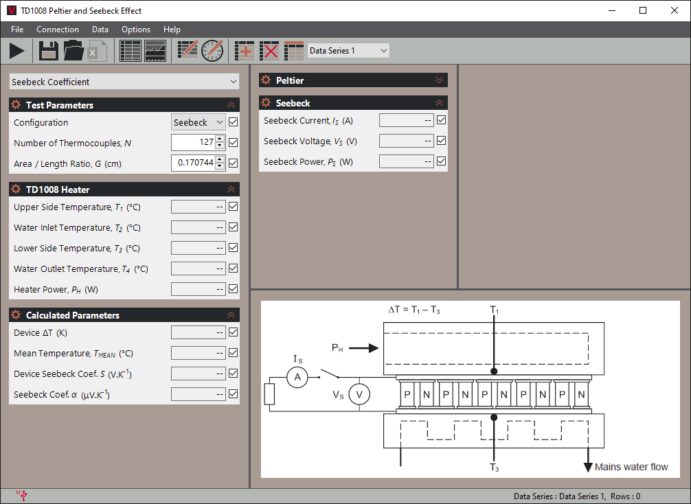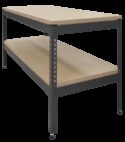Experiment
TD1008

PELTIER AND SEEBECK EFFECT
A benchtop unit to examine the performance of a thermoelectric device for Peltier or Seebeck tests as a heat pump or generator.
If you have any questions or you'd like to discuss a product, please call us.
+44 1159 722 611PELTIER AND SEEBECK EFFECT
The increasing need for smaller and more portable electrically powered equipment has produced a need for low maintenance, smaller and more portable cooling. To satisfy this need, manufacturers now use solid-state thermoelectric devices in computers, portable refrigerators and cool boxes.
The Peltier and Seebeck Effect demonstrator shows how one of these devices work and tests its performance when connected in a choice of two modes:
- Heat to electricity for power generation when used in Seebeck mode – often used for thermoelectric generation and given the acronym ‘TEG’.
- As an electrically powered heat pump when used in Peltier mode. Often used in thermoelectric cooling and given the acronym ‘TEC’.
Students then learn to analyse its performance in both modes, analysing several factors including coefficient of performance (COP) and energy balance.
For the Seebeck tests, the equipment uses an external cold water source and variable power electric heater to create a temperature difference across the device. The device then converts this into an electrical potential difference (voltage). A switch allows tests with and without an electrical load. The load allows generated power to flow and be measured for a range of applied temperature gradients.
For the Peltier tests it also uses the electric heater, but with a small water storage tank and water pump, creating a stable, fixed-flow water supply. A variable voltage supply controls the electrical power into the device. A calibrated vessel allows students to measure the fixed water flow accurately, for calculation of the heat pumped at the ‘cold’ side of the device. This allows assessment of the device performance over a range of temperature gradients and electrical power inputs.
A hand-operated valve allows the user to change the water source without the need to reconnect pipes. Students need no tools to do the experiments.
Thermocouples measure temperatures near to the surface of the device and at the inlet and outlet of the water circuit. Clear, multiline digital displays show all temperatures and electrical measurements around the device, such as voltage, current and power.
The equipment control panel includes a schematic diagram of the device. A transparent guard covers the device. These allow students to understand the device construction and view ‘frost’ formation in simple cooling demonstrations (determined by local conditions).
You can do tests with or without a computer connected. However, for quicker tests with easier recording of results, TecQuipment can supply the optional Versatile Data Acquisition System (VDAS®). This gives accurate real-time data capture, monitoring and display, calculation and charting of all the important readings on a computer.
Learning outcomes
- Seebeck coefficient and the performance of a thermoelectric generator (TEG)
- Peltier heat pump tests and the performance of a thermoelectric cooler (TEC)
- Coefficient of performance (COP) and energy balance
- Comparisons of manufacturers data, theoretical performance and results from experiments
- Observation of the Lenz and Thomson effects
- Simple cooling demonstrations (determined by local conditions)









